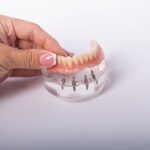
The knowledge of surgical instruments is necessary for multiple medical profession. It is not something that is only studied by surgeons.
Nurses and staff who prepare the operating room are other examples of individuals who need to understand the terminology and functionality.
Careers such as medical research and even dentistry require knowledge of surgery equipment to some extent. If you are just curious or preparing for a test, then this article is just for you.
We are taking you step by step through the process of learning surgical equipment and helping you answer all the questions. So if you’re confused about which instrument is used for scraping tissue and which tool helps in clamping vessels, then we would suggest you to keep reading ahead! Hold on; we will answer these questions in the end.
How to Prepare for a Test
It is common for candidates to feel frazzled a few weeks before their surgical instrument test. It’s only natural to feel anxious about an exam that tests such a copious amount of knowledge.
A few medical and nursing classes give a brief overview of all surgical instruments, but unless an individual uses the equipment daily, it is rather easy to forget the name of each tool. Individual reviewing is an excellent method of supplementing your knowledge and classroom instruction. Taking relevant classes and reviewing textbooks, notes, and other study material frequently would prove very useful for remembering the vast range of tools and instruments.
The books from class often seem to have illustrations and labeled diagrams to aid your memory with visuals. A quick way to remember them is the flashcard technique. You can make flashcards for each instrument and then cover the specific term with a blank piece of paper. This will help your brain in recalling the exact description and use of each tool. This technique would let you retain the information for the long haul and store it in your long-term memory.
If you don’t have access to relevant books, you can invest your money in a surgical supply catalog. Such catalogs are filled to the brim with details and pictures about hundreds of surgical instruments. You can study the catalog and make flashcards to help your learning process.
How to Strategize Learning
Every medical student has a different plan for organizing the volume of information they study and the number of hours they dedicate each day. A critical challenge for medical students is that they are presented with a considerable amount of facts and information which requires utmost skills in active learning. If you are wondering what it is, then, ‘active learning’ is the process of making decisions while studying many study materials at once.
You aim to question yourself about what is most important. Where does figure x fit into the bigger picture? Another companion to this study technique is called passive learning. It involves reading pages and pages with the hope of magically learning things at a quicker pace. You may be a passive learner in the beginning, but you need to switch to active learning to succeed in medical occupation.
Understanding the Process of Active Learning
As discussed above, active learning is significant for retaining large amounts of data, but how precisely does it work? That’s a good question! It is a simple four-step formula. Identification, organization, memorization, and application. It begins with identifying the most critical information, such as finding out the vital points of a fifty pages long chapter.
The next step is organizing your time and resources in a framework that is suitable for your needs and facilitates memorization. Then starts the memorization: which is a frequent review of all the information that you have learned. Moreover, in the end, comes the application. It asks you to apply your knowledge to complex situations, answering past paper questions, clinical applications, and whatnot.
Beginning a Study Strategy
You will need a ‘high volume’ study method at one point or another, while you are trying to survive medical school. A vast majority of students benefit from this. If you want to develop your study strategy, then you can follow the five-step procedure written right here for your convenience.
- The first step is understanding the bigger picture. Put another way; it is the act of being prepared and knowing the textbook chapter before lecture slides. This will help you find the four to five essential topics beforehand.
- The second step is the drawing of rough drafts from the lecture notes. These can aid in emphasizing the context while you study from your textbook.
- The next step is the creation of lists and diagrams that would help you organize your study materials.
- You can now move onto memorizing actively through lists and diagrams. This will help you incorporate the information efficiently.
- The process ends with the application of study materials through quiz questions. Moreover, voila! You are all done with your preparation.
As Promised, Here Are the Answers to Both the Questions:
1. What instrument is used for scraping tissue?
A surgical scoop is used for debriding tissue. Whereas a curette is used to remove pathological tissue.
2. Which instrument helps in clamping vessels?
A hemostatic clamp is used to control bleeding by clamping onto open blood vessels.
We wish you all the best for your surgical instrument test and every other test that you have to study for. Just remember to stay patient with yourself and keep exploring!
- 10 Best Gifts for Vloggers - October 20, 2020
- Luxury Spots In Maldives That Tourists Must Visit On Their Vacation - October 17, 2020
- 8 Fashion Tips for Women to Look Effortlessly Gorgeous on Any Occasion - September 25, 2020






